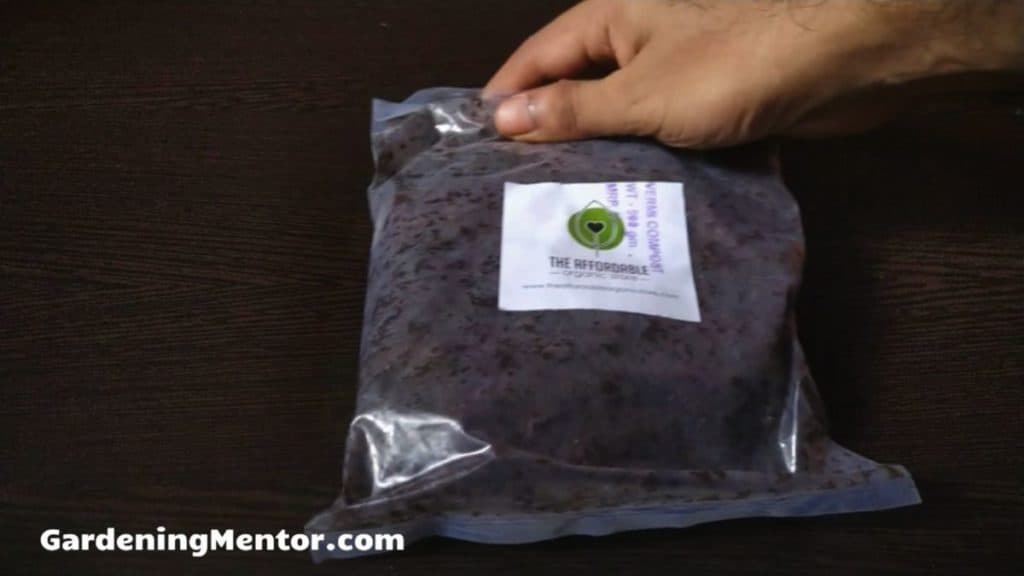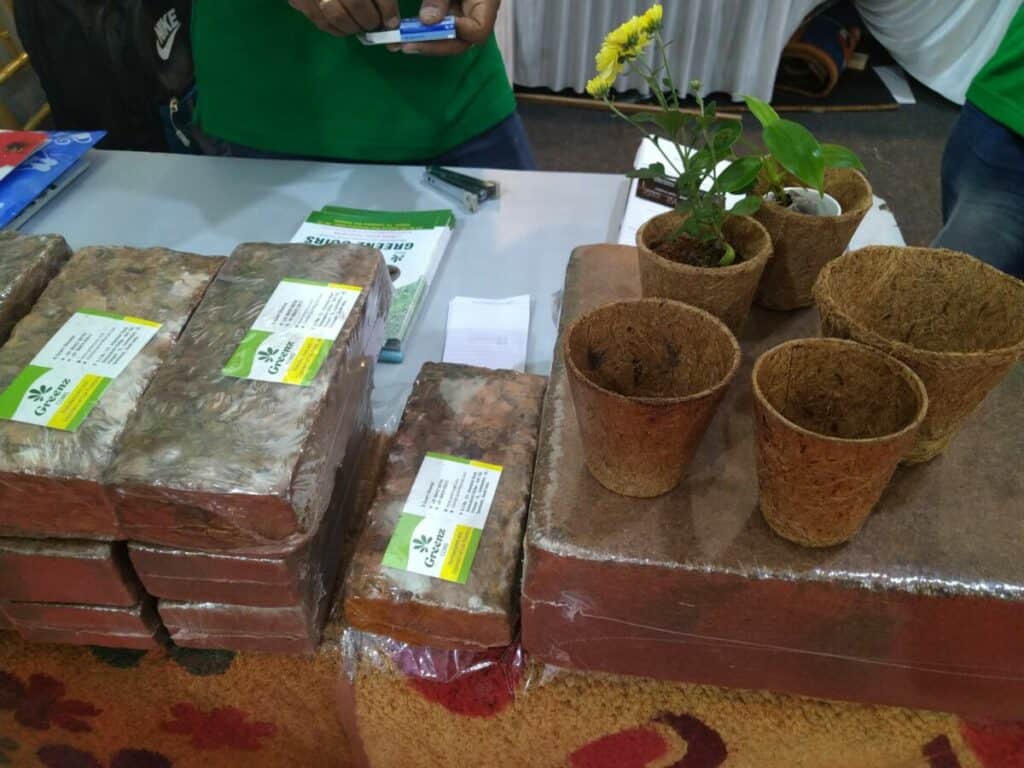We always want the best potting soil for growing potted plants. And it’s tempting to use peat moss because of its benefits.
Peat moss is good for potted plants because it helps with water retention and releasing it slowly into the potting soil. It helps improve texture of the potting soil and prevents roots from compacting. Peat moss takes time to grow and is not suistainable for the environment.
You need to decide whether using peat moss for your potted plants is a good choice. I’ve written down the benefits and drawbacks of using peat moss and how you can use it if you want to. I’ve also mentioned some alternatives you can use if you don’t want to use peat moss.
Why is peat moss good for potted plants?
1. Peat moss has an acidic pH
Peat moss has a pH between 4.0 to 4.5 which makes it acidic. It helps maintain the acidity of the potting soil by acting as an acidic buffer to counteract alkaline salts.
These alkaline salts can cause nutrient deficiencies and toxicities if left untreated for too long.
The acidic nature of peat moss makes it suitable to grow acidic plants such as rhododendrons, blueberries, and azaleas.
2. Holds several times its weight in moisture
The peat moss is hydrophilic and can hold a lot of moisture once it’s watered. It then slowly releases this moisture back into the potting soil.
The water-holding ability of peat moss can be attributed to its high porosity and large surface area, as well as an environment created by air pockets between particles. It can hold up to 20 times its weight with the water.
This means you don’t need to water your potted plant as often if you use peat moss in the potting soil.
3. Holds on to nutrients and releases them slowly
The peat moss itself does not contain a lot of macronutrients like nitrogen, potassium, and phosphorus. It does contain some traces of micronutrients like calcium, sodium, and magnesium.
You will use the peat moss mixed with other materials like compost and fertilizer that contain nutrients. The peat moss will hold on to the nutrients and slowly release them into the soil.
This means the nutrients will be available for the potted plants for a longer period of time. They won’t easily get flushed out when you’re watering the potting soil.
4. Improves texture of the potting soil
The peat moss has a fibrous texture that helps it improve the potting soil. It will help retain moisture and nutrients longer. It will help aerate the potting soil so oxygen can reach the roots of the plants.
The better texture of the potting soil will help the plants get the required nutrients, moisture, and oxygen. This will improve the growth of your potted plant.
5. It is a sterile planting medium
The peat moss is sterile and does not contain many nutrients. It also does not contain any pathogens or weeds that could damage the potted plant.
This makes it very suitable for starting seeds as the sterile nature will protect them from pests and diseases as they germinate.
It’s also suitable for mixing with the potting soil and use for seedlings that you may have purchased from a nursery or garden center. You can transplant such seedlings in the sterile mix and protect them from pests and diseases.
Why is peat moss bad for potted plants?
Peat moss is a non-renewable resource
Peat moss is extracted from peat bogs available only in select locations of the world such as Canada. It takes decades for peat bogs to recover from the extraction.
Some are too damaged by the process and the peat moss will never grow back again making them permanently gone. The extraction also affects wildlife as there is a change in their natural habitat.
Releases carbon dioxide during the mining process
Peat moss is extracted by mining peat bogs that hold a lot of carbon dioxide which is released during the mining process.
This release of carbon dioxide will contribute to the greenhouse gases on the planet and contribute to the problem of global warming.
Lack of nutrients
Peat moss does not contain a lot of nutrients because it’s sterile. It is slow to break down into organic matter that would provide some nutrients to the potting soil.
You need to mix peat moss with organic materials like compost before you can use it for growing potted plants.
Can become hydrophobic
If you don’t water the peat moss for a long time it will turn hydrophobic. This means it will not hold water as well and just drain it out of the potting soil.
This will cause the roots to dry out due to a lack of moisture and nutrients. You need to set up a schedule to water your potted plants if using peat moss in the potting soil.
Acidic pH not suitable for all plants
Peat moss is very acidic having a pH between 4.0 and 4.5. This means it’s not suitable only to use peat moss for plants that need a neutral or alkaline pH.
You need to mix it up with materials like compost and lime that will help balance out the acidity and make the potting soil suitable for growing plants.
Peat moss can be expensive
Peat moss is a non-renewable resource that is available only from select locations and in limited quantities. This makes it expensive when compared to materials like compost or coco coir.
It does last for several years once you’ve added it to potting soil but you do need to invest more money when starting to use it in your potting soil.
Where can you buy peat moss?
You can buy peat moss at your local garden center or nursery. You can also pick some up at stores like Lowes, Home Depot, or Walmart.
I’ve listed some options that you can buy online at Amazon.
- Hoffman Canadian Sphagnum Peat Moss
- Espoma Organic Peat Moss
- Premier Pro Moss Horticultural Peat Moss
How do you use peat moss in a potted plant
Peat moss works best when you mix it with other materials to create a potting mix. You add 1/3rd peat moss with 1/3rd vermiculite and 1/3rd perlite.
You will get a potting mix that you can start growing your potted plants in. The three components will give the potting soil the right texture to retain sufficient moisture and have good aeration.
You can add a few inches of compost into this mix to give it organic material as well as nutrients beneficial to the plant. The compost also adds beneficial microorganisms that will enhance the texture and add nutrients as they feed on the organic matter.
If the potting soil is turning too acidic for the plant, you should mix in 1/2 ounce of lime per gallon of soil to help neutralize the acidity.
You could add a slow-release fertilizer to the potting soil if you’re growing vegetable plants. This will give them a boost of nutrients to grow healthy and fast.
What are the alternatives to peat moss?
You may find that the drawbacks of peat moss are just too much for your liking and want to use alternatives.
Compost

Compost is created by decomposing layers of organic matter like leaves, grass clippings, wood chips, straw, hay, and vegetable waste in a compost pile.
You can avoid using peat moss completely and just add compost to your potting soil. You can mix in1/3rd perlite, 1/3rd vermiculite, and 1/3rd compost to create your potting soil mixture.
The compost will provide the texture to help the potting soil retain moisture while draining out the excess. It will help oxygen, nutrients, and moisture through the potting soil reach the plant roots.
The compost contains rich, organic matter that helps provide nutrients to the potting soil. It also contains beneficial microorganisms that break down the organic matter into such nutrients.
Coco coir

Coco coir is an alternative you can use instead of peat moss. It is fibrous material obtained from the outer shell of the coconut.
This is a renewable resource that provides a texture similar to peat moss. It helps retain moisture and nutrients and releases them slowly to the potting soil.
It will break down slowly into the potting soil and enrich it with organic matter and nutrients. And you’ll find it a lot cheaper than peat moss.

Fact Checked, Written, and Published by Kevin Rodrigues
Kevin is the founder of Gardening Mentor, a website that aims to teach people to grow their own food in a limited space. As a self-taught gardener, Kevin has spent several years growing plants and creating gardening content on the website. He is certified in Home Horticulture and Organic Gardening from Oregon State University. He has a Post Graduate Diploma in Horticulture and Landscape Gardening from Mumbai University.
Read more
